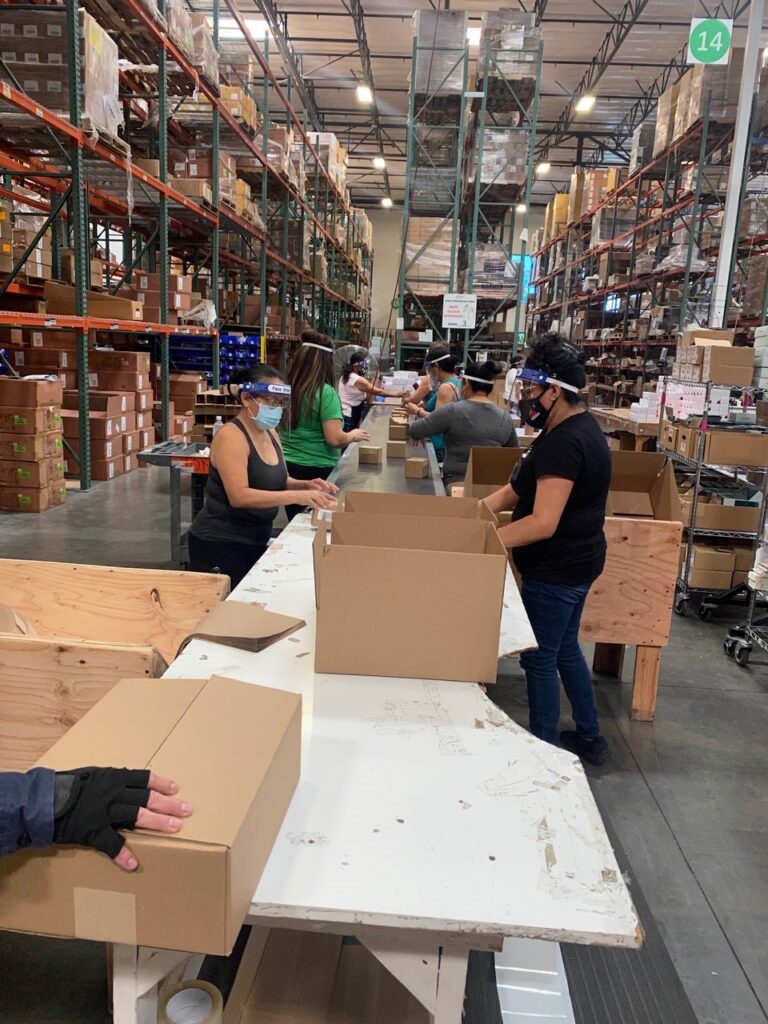In today’s landscape of multichannel commerce, a supply chain that fires on all cylinders is essential for success. At the heart of this, for any fruitful business, is efficient and effective fulfillment services. This means being able to pick, pack and ship with high degrees of accuracy, efficiency and capacity.
The modern fulfillment center or warehouse should be organized around these elements as the highest priorities, or else your company can and will experience delays and mistakes that hurt your standing with customers.
Pick, pack and ship services might seem simple at first glance. An order comes into the warehouse, a packing list is created and the items are collected off the racks by human workers or robots. Once the items are all gathered, they are prepared for shipping. However, there are many nuances to how these tasks get done.
There are numerous techniques and methods that may be right for your operations and needs. Choosing the ones that are most beneficial for you begins with knowing each one and what type of advantages they provide. With that in mind, here’s an overview of some of the most common and what they mean.
Understanding Picking Processes
There are four basic picking procedures utilized in most fulfillment centers:
- Piece Picking: This is the most obvious and simplest picking method. It involves an employee taking the packing slip for a single order and grabbing each item on the list one at a time. It’s typically used by smaller businesses that only need to fill a few orders each day and have limited SKUs — so there’s little confusion about which item is which.
- Batch picking: This method ups the complexity slightly in exchange for greater efficiency with a larger number of orders. In this model, pickers group orders based on where in the warehouse the items are located. This means they don’t have to backtrack to different sections of the facility for each order because multiple orders can be fulfilled from the same general area.
- Zone picking: For warehouses and fulfillment centers that cover a lot of real estate, it might make sense to go with zone picking. This involves pickers who stay stationed in a particular zone and only pick items within their zones. Orders are passed from zone to zone until all items are picked. This generally requires a more sophisticated system involving warehouse management software due to the complexity of the system.
- Wave picking: Combining elements of the previous two models, wave picking means pickers are still confined to a specific zone. In this case, however, they pick for a batch of orders as opposed to one order at a time. When each wave of orders is completed in a zone, they are moved along to the next in line.
Successful Storage Strategies
Likewise, there are myriad ways to organize your inventory based on your needs and which models work best for your operations. Here are four of the most frequently employed techniques in pick and pack fulfillment centers:
- Like with like: In this model, items are stored according to their type. For example, umbrellas of different colors and sizes are grouped on the same shelf. Although this may seem intuitive, it can introduce problems because it increases the chances of the wrong item being picked by accident.
- Chaotic: Don’t let the name scare you. This tactic helps improve picking accuracy. Instead of all umbrellas being on the same shelf, each size and/or color is grouped with unrelated items. This means there is a far lesser chance a picker will grab a large blue umbrella when the order is for a small blue umbrella. However, this technique requires the use of a 3PL warehouse management system to help ensure employees don’t have to memorize the layout of your entire facility.
- Volume-based: This strategy involves placing items with the highest turnover as close to the packing station as they can be. Those that sell the slowest are placed in the farthest reaches of the floor. This means pickers don’t have to take as many steps over the course of the day and most orders are filled quickly.
- Class-based: Related to the volume-based strategy is class-based inventory, where items that share certain qualities are stored. For example, items that require the same packing materials could be grouped so they are all within the same distance of the packing station.
Choosing the Right Partner
Having a fulfillment partner that understands all of these models is critical for your success. AMS Fulfillment provides best-in-class pickup, pack and ship services — thanks to our advanced technology, experienced personnel, scalable facilities and effective inventory control procedures.
If you would like to learn more about everything we can do for you, get in touch today.




